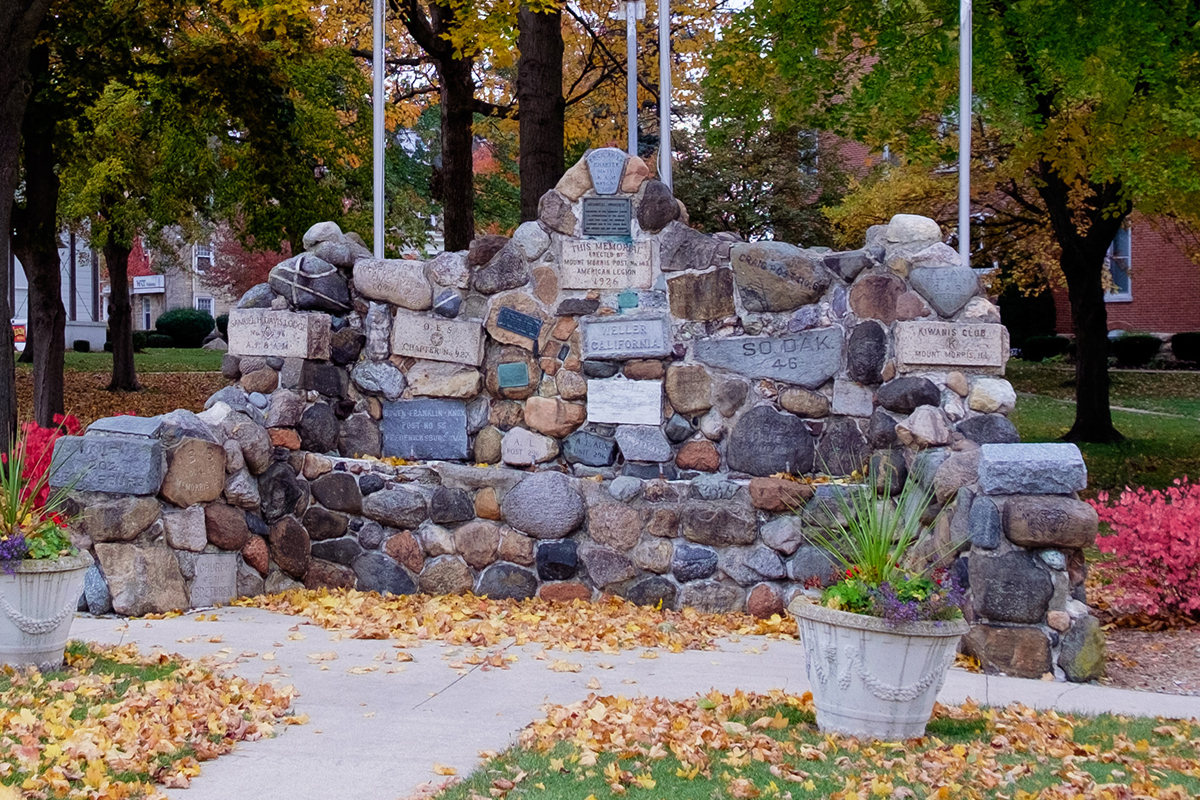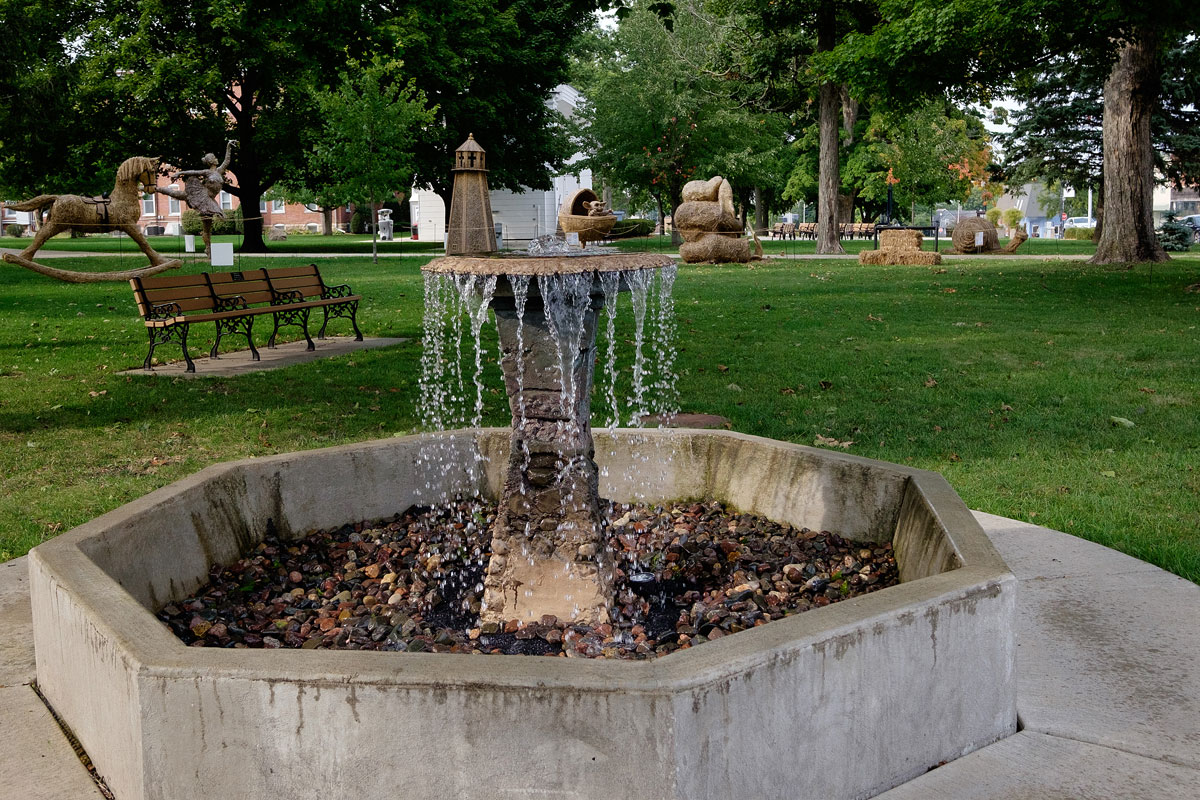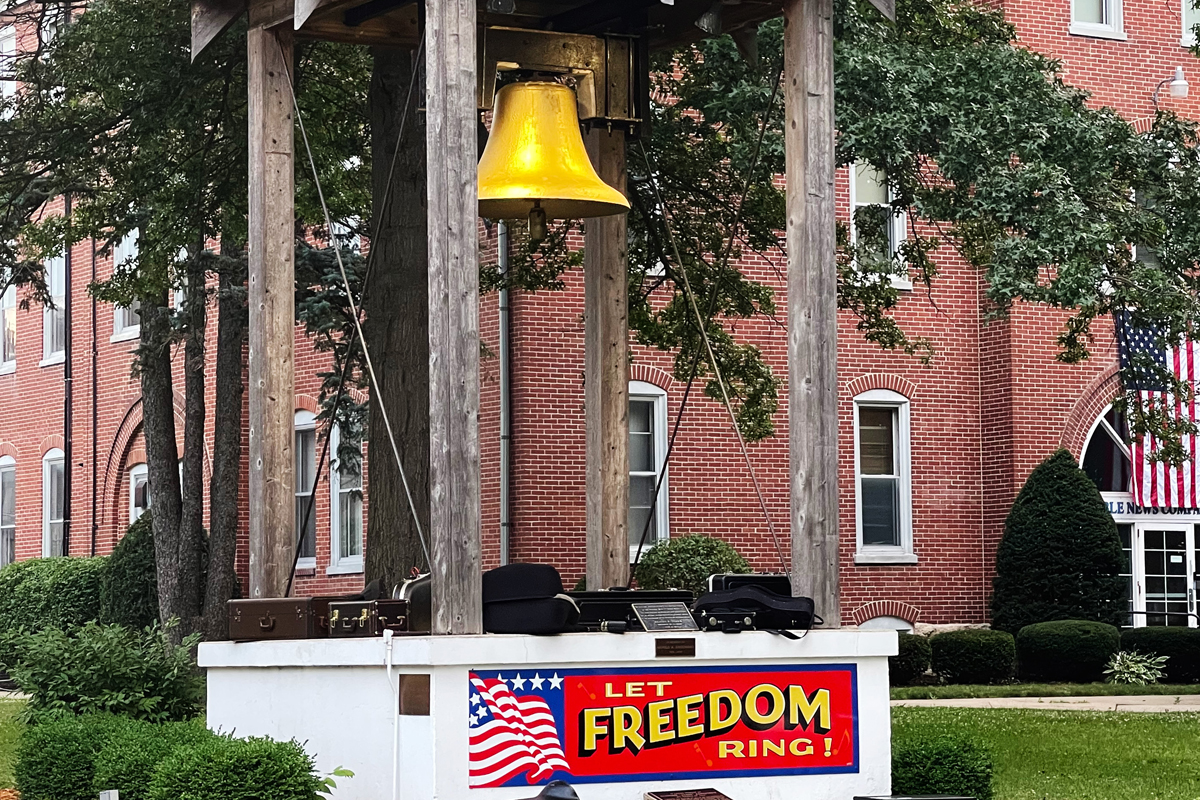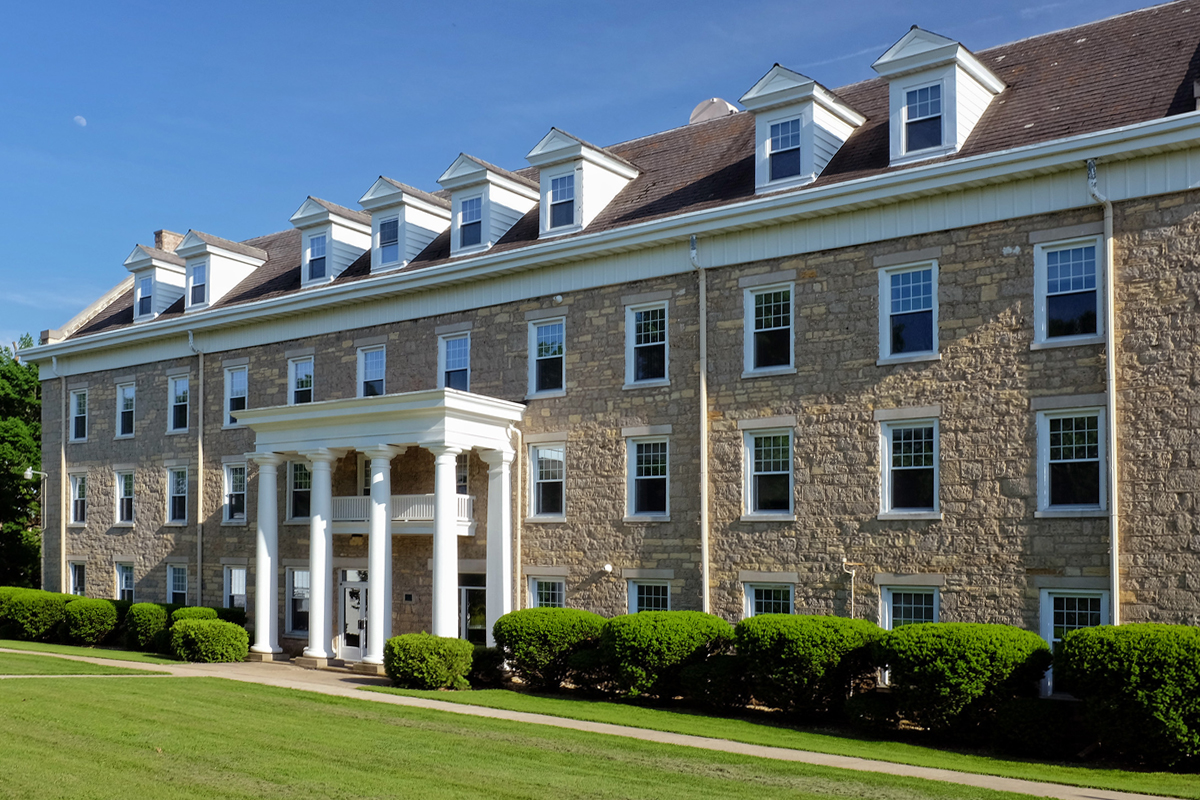Mt. Morris was settled around 1837 by adventurers from the east coast seeking open spaces and a better life. It still offers stunning rural views and a high quality of life for anyone seeking to make My Town, Mt. Morris, their town.
Rooted in Higher Education
It’s still known as the “campus,” although the last institution closed in 1932. What remains of that history can be seen in preserved buildings and landmarks, including Old Sandstone, the Memorial Fountain, Warren G. Reckmeyer bandshell, and College Hall.
Printing Saves Us from the Great Depression
From its roots in higher education, Mt. Morris grew into a hub for printing, publishing, and circulation. The first printer opened in 1842 to print a village newspaper. But the industry took off when twin 18-year-old Kable brothers took over an abandoned print shop in 1898 and grew that printing business into the largest employer in the Village.
The growth and prosperity of Mt. Morris in the early years came entirely from the development of the printing plant. By the 1930’s, printing was such a core business that Mt. Morris was one of only two communities in the nation relatively unaffected by the great depression. Mt. Morris because Kable Printing Company kept churning out newsletters and periodicals that were easily accessible and affordable to the masses, and Hershey, Pennsylvania, which produced chocolate Hershey Kisses.
Unfortunately, a prolonged worker’s strike in the printing plant in the 1970s and 80s forced many workers to leave town. Subsequent owners were never able to sustain the dominance of earlier years — although, in 1998, the plant printed 1.7 billion catalogs, inserts and magazines a year, totaling $95 million in sales, and shipped throughout North America and the United Kingdom, under ownership by Quebecor World Printing.
A Heritage of Printing and Publishing – and Music
Kable News Company was a circulation and distribution business that purchased College Hall on the campus in 1932. Many of the magazines that were printed by Kable Brothers Printing were distributed by Kable News Company. The business left Mt. Morris in the 2000s. The impressive red brick building was purchased by a local businessman who renamed it College Hall to honor its place in Mt. Morris history. College Hall has been renovated and is home to several local businesses. The public is invited to visit the Mt. Morris Historical Museum located in the foyer.
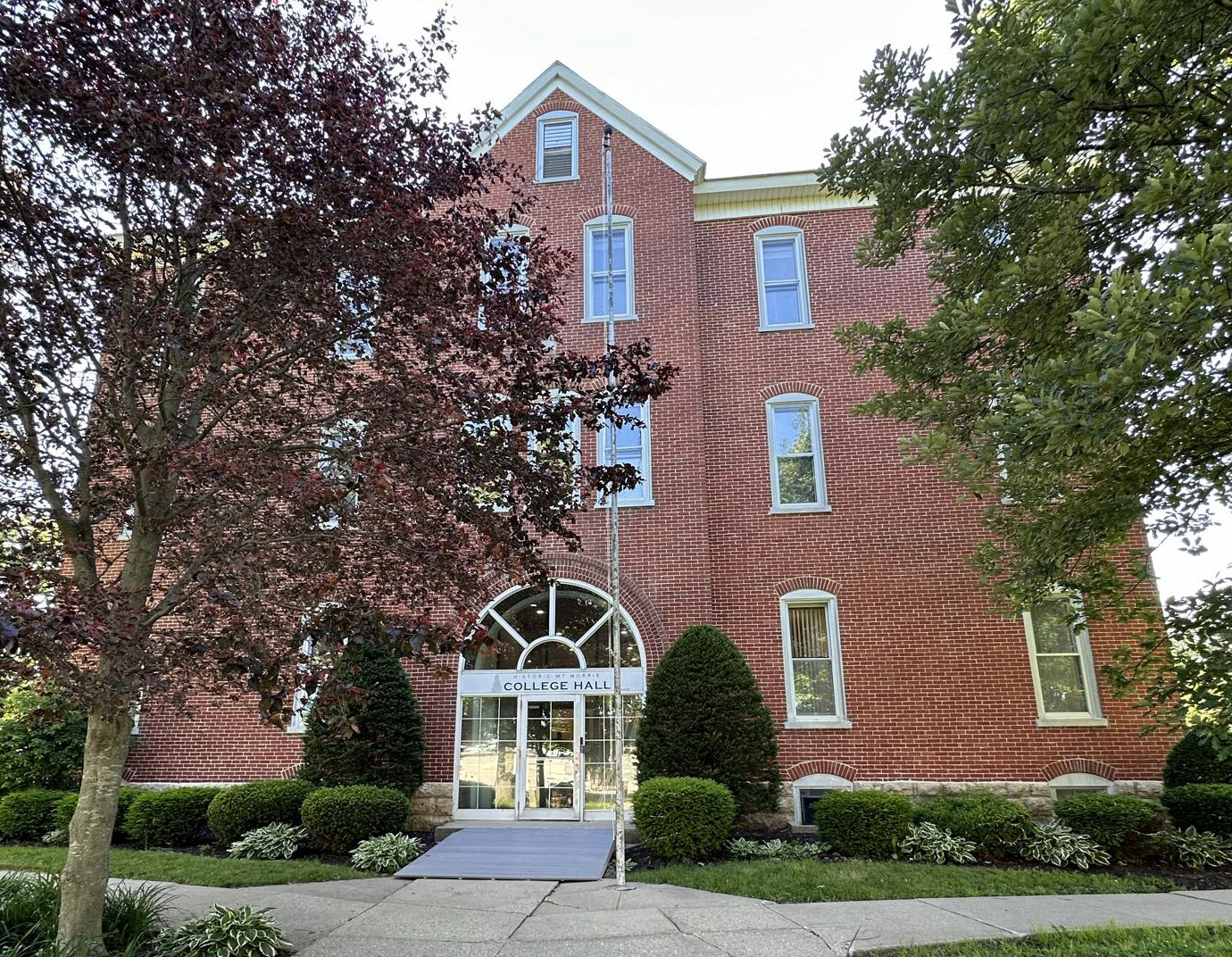
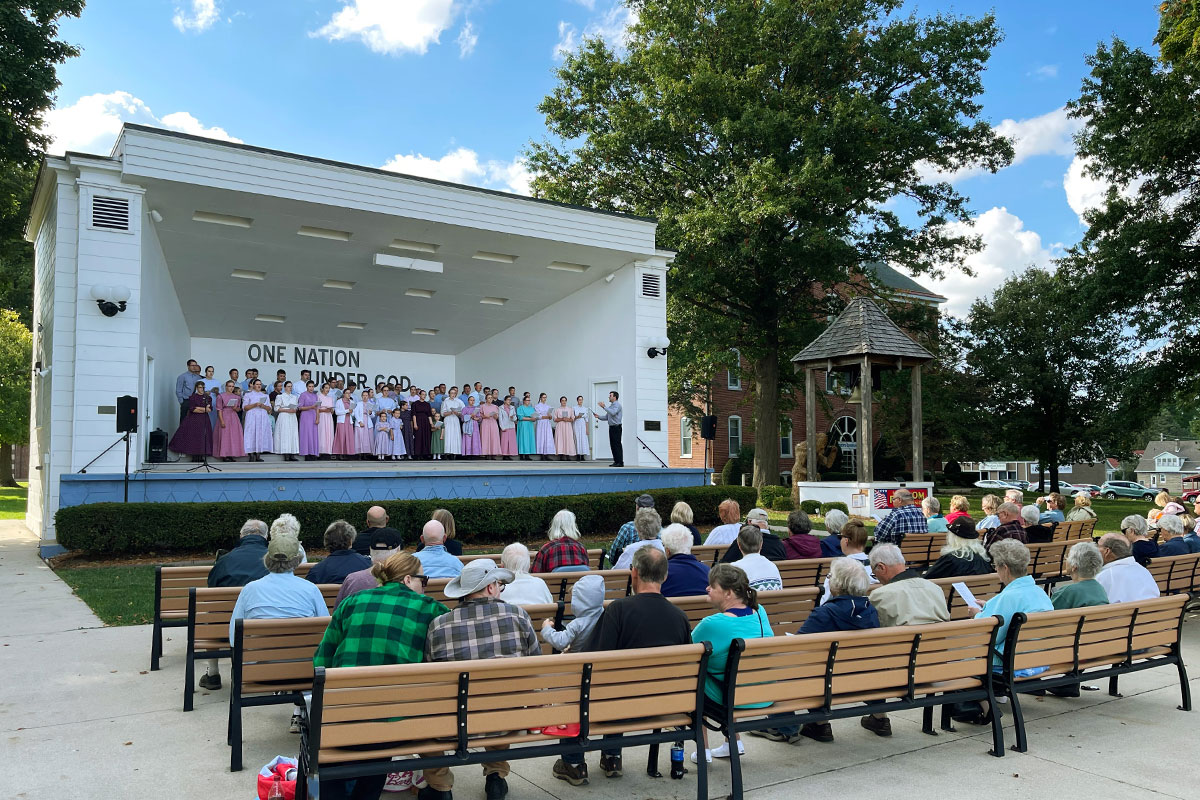
The Village also has an unusually rich musical history. There has been a band, orchestra, or musical organization in Mt. Morris since 1845, only six years after the Village’s founding. One of the Kable brothers was such a musical benefactor that if you were looking for a job and played an instrument it almost guaranteed you a job in the printing plant. We can point with pride to the current Kable Concert Band which has performed free summer concerts on the campus every year since 1896.
Today
The Mt. Morris campus is on the register of historic places, recognized for a long and remarkable heritage of higher education, musical longevity, and the printing and publishing industry.
And we have turned to the arts as a source of distinction. Led by Encore! Mt. Morris, we are committed to developing Mt. Morris, Illinois, into a unique, thriving rural and cultural arts destination in northwest Illinois.
Historical Highlights
- Mt. Morris was established in 1839 and incorporated in 1848.
- The municipal Kable Concert Band has performed every season since 1896 and still performs free weekly summer concerts from the bandshell on the campus.
- The Freedom Bell, on the campus square, was declared the official Freedom Bell of Illinois by the state legislature in 1971, and is rung every July 4th at 2 p.m. EST, simultaneously with “ringing” (actually, gently tapping) the famous Liberty Bell in Philadelphia.
- (Then) actor Ronald Reagan was one of the dignitaries who rang the Mt. Morris Freedom Bell when it was dedicated on a cold day in April 1963. Reagan borrowed an overcoat from a local, and the coat is on display in the Mt. Morris Museum.
- Liberty Walkup, of Mt. Morris, patented the “air-brush” in 1883, a name created by his wife, Phoebe. They founded the Air Brush Manufacturing Company and Illinois Art School, where airbrushing was taught to students from around the world. Among others, the Walkups taught airbrush technique to American Impressionist master Wilson Irvine at the Air Brush School in nearby Rockford, Illinois.
- As a printing and publishing town, Mt. Morris was little affected during the great depression because the periodicals and newsletters they printed were affordable, readily available around the country, and vital sources of information for people eager for news and distractions.
- Mt. Morris is home to more than a dozen Lustron homes – mass-produced, ready-to-build houses designed to make post-WWII home ownership easy and affordable. The prefab homes were built on a steel frame, and covered inside and out in porcelain-enameled, square steel panels. The pieces were assembled onsite in a fraction of the time needed for a conventional house. They were promised to be “termite-proof, verminproof, ratproof… fireproof, decayproof, stain-proof, salt-waterproof,” and “almost maintenance-proof.” These rare pieces of Atomic Age architecture are mostly in the north–northwest part of town in distinctive colors of light blue, light gray and light yellow.
- In the early 1990’s, the Mt. Morris post office was one of the busiest in the state, with the volume of incoming and outgoing mail rivaling cities with populations 50 times larger, thanks to Watt Publishing, Kable News Company, Dawson Subscription Services, and the Quebecor Printing plant.
- Mt. Morris is the official (and only) host of the National Straw Sculpting Competition.
- In 2022, the National Trust placed the campus area on the National Register of Historic Places.
